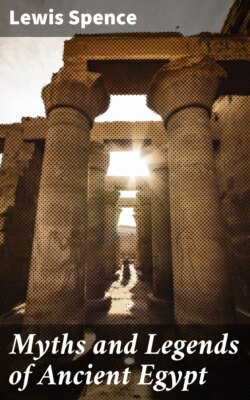Читать книгу Myths and Legends of Ancient Egypt - Lewis Spence - Страница 11
The Egyptian Idea of God
ОглавлениеThe word by which the Egyptians implied deity and, indeed, supernatural beings of any description was neter. The hieroglyphic which represents this idea is described by most Egyptologists as resembling an axe-head let into a long wooden handle. Some archæologists have attempted to show that the figure resembled in outline a roll of yellow cloth, the lower part bound or laced over, the upper part appearing as a flap at the top, probably for unwinding. It has been thought possible that the object represents a fetish—for instance, a bone carefully wound round with cloth, and not the cloth alone.
We are ignorant of most of the gods worshipped during the first four dynasties, chiefly because of the lack of documentary evidence, although some are known from the inscription called the Palermo Stone, which alludes to several local deities. Some portions of the Book of the Dead may have been revised during the First Dynasty, and from this we may argue that the religion of the Egyptians, as revealed in the later texts, closely resembled that in existence during the first three dynasties. It is only when we come to the Fifth and Sixth Dynasties that we discover material for the study of the Egyptian pantheon in the Pyramid Texts of Unas, Teta, Pepi the First, and others. By this period the first phase of Egyptian development appears to have been entered upon. At the same time it is plain that the material afforded by the Pyramid Texts contains stratum upon stratum of religious thought and conception, in all probability bequeathed to the pyramid builders by innumerable generations of men. In these wondrous texts we find crystallized examples of the most primitive and barbarous religious elements—animistic, fetishistic, and totemic. These texts are for the most part funerary and, in consequence, relate chiefly to deities of the underworld.
